Can AI support brand consistency in design? My experience with Midjourney in capturing Lemonade’s iconic style.
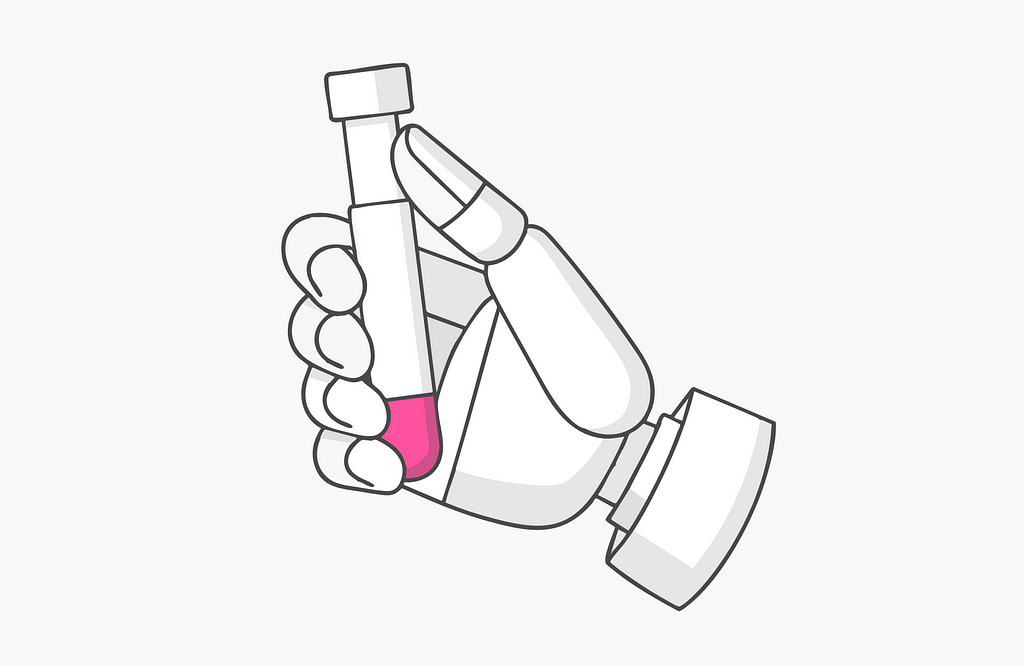
Illustration has never been my strong suit. Designing user interfaces, experiences, and products? No problem. But creating illustrations that perfectly reflect a brand’s unique style? That’s another challenge.
After three years as a designer at Lemonade, working on web and mobile products, I gained a deep understanding of the brand’s distinct visual language: clean lines, a minimalist color palette, and that unmistakable pop of vivid pink. This got me wondering — could Midjourney and today’s AI capabilities actually fill in my gap in illustration skills? Could I finally bring my vision and design ideas to life on my own, without needing a professional illustrator? With that question in mind, I decided to dive in and test it out for myself.
As I began experimenting with AI-driven illustration, I couldn’t ignore the ethical questions this choice might raise. Could AI tools like Midjourney impact job security for professional illustrators? For me, the decision to use AI wasn’t about avoiding the costs of hiring talent but about exploring how AI could complement my creative process, especially in the initial stages of visual experimentation. My goal was to see if AI could help streamline parts of the workflow — like quickly visualizing ideas or iterating on brand consistency — while still appreciating the unique skills and depth that only a professional illustrator can bring.
The challenge of achieving brand consistency
Achieving true brand consistency with AI involves more than just typing in a prompt — it’s about capturing the subtle details that reflect the brand’s core identity. Lemonade’s illustration style may seem straightforward at first glance, but designers know that simplicity demands precision. It’s a style built on clarity: minimalist lines, grayscale tones, and that unmistakable pink accent. Together, these elements create a look that’s instantly recognizable.
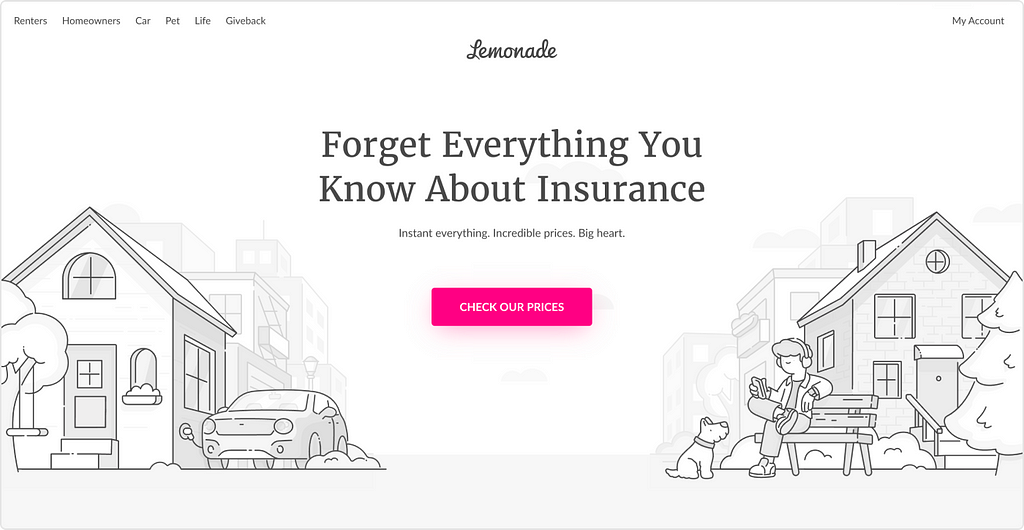
Directing Midjourney to think in brand language
- Analyze existing brand illustrations: I used ChatGPT to create a foundational prompt by examining a variety of official illustrations, paying close attention to line quality, spacing, proportions, and color use. To keep the prompt simple, I decided to leave out pink initially, knowing it could be added later without confusing the AI.

2. Select a reliable, iconic object for prompt testing: I selected an iconic object — a Mini Cooper. Its unique structure allowed me to see how well Midjourney could capture clean lines and simple, recognizable shapes. Using this as a reference helped me evaluate each prompt adjustment without introducing too many variables. I recommend choosing an object you’re thoroughly familiar with, so you can easily spot any deviations from its true form.
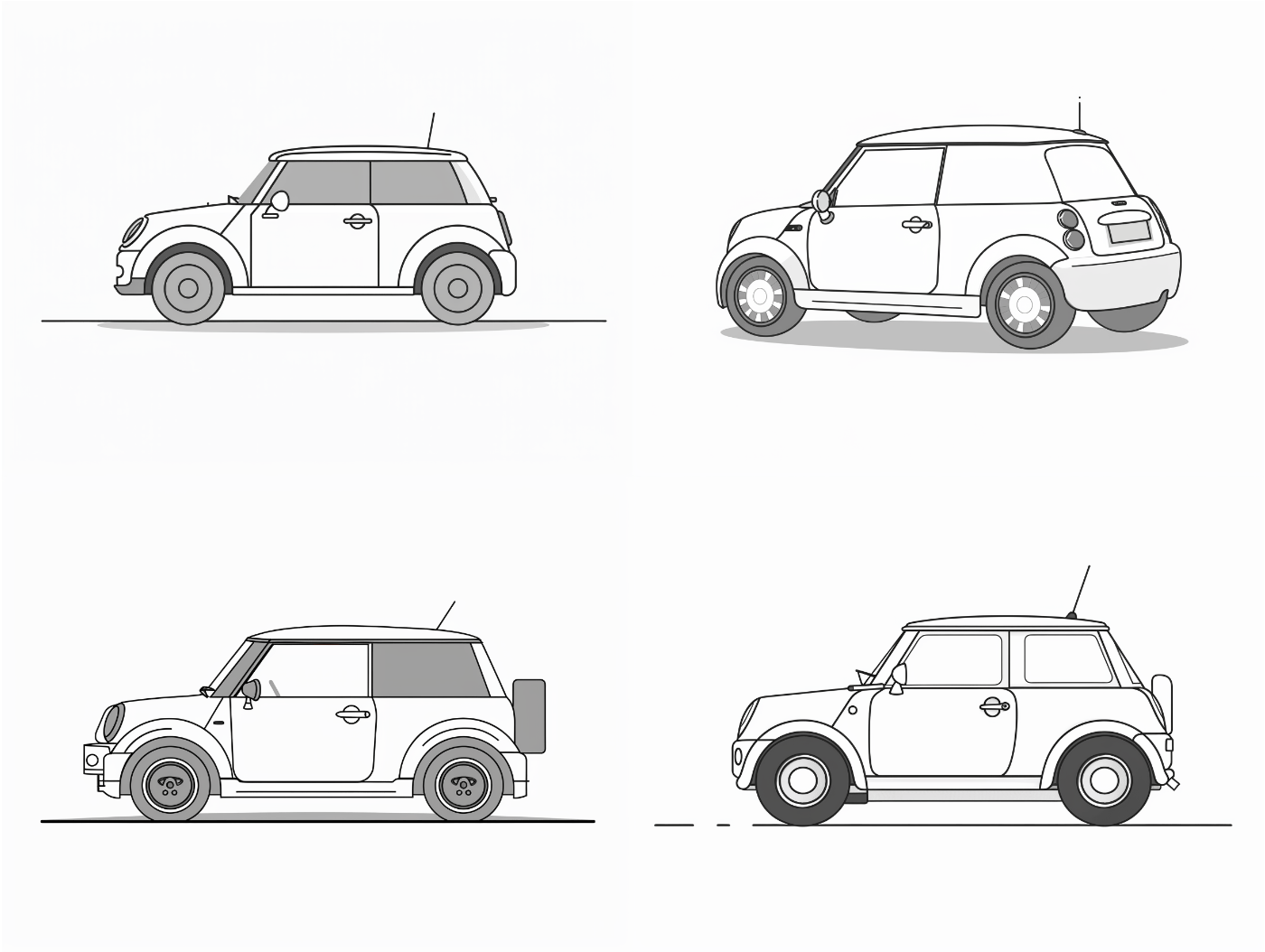
3. Refine through iteration: While Midjourney successfully captured the style for the Mini Cooper, other objects like buildings or animals lacked consistency. To address this, I refined the prompt with a focus on specifics like composition — how each illustration should interact within its space, considering curves, relationships between objects, balance, and angles. These refinements helped align the illustrations with the brand’s unique perspective, making each object feel cohesive and purposefully positioned.
To further enhance consistency, I incorporated the — sref command with a range of official illustrations as style references. These included examples of broad structural shapes, rounded forms, depth, architectural elements, and line breaks. This combination enabled the AI to achieve a more unified brand look across diverse object types and forms.

Achieving brand precision, solo
After several iterations, I developed a powerful, versatile prompt that captured the style precisely, essentially illustrating how each object would appear in the brand’s visual language. This prompt became a foundational template: I only needed to replace the object description, and Midjourney consistently generated cohesive, brand-aligned illustrations. I was pleasantly surprised by the level of precision and creativity the AI brought to each illustration.
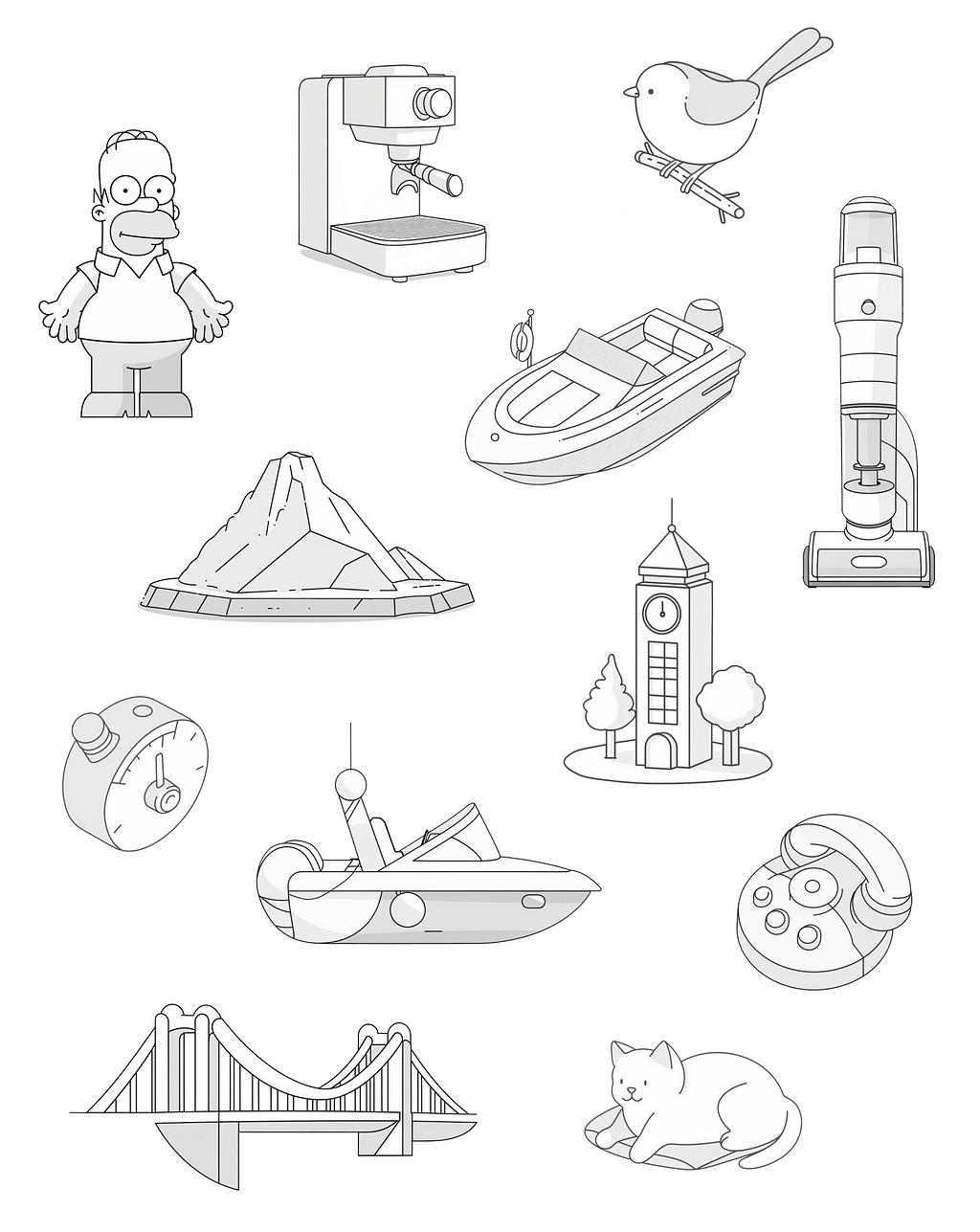
The future of AI-driven brand illustration
This experiment has opened my eyes to the potential of AI in scaling a brand’s visual identity across platforms. Imagine a company launching a new line of products — with the right AI setup, the brand’s unique style could be instantly applied to each new product, streamlining the visual identity process and enabling designers to adapt quickly while maintaining consistency. For designers seeking effective illustration solutions, experimenting with AI-driven tools can be a game-changer.
This process allowed me to experiment, test ideas, and visualize concepts while staying fully aligned with the brand’s guidelines. It isn’t just about output; it can help companies refine and sharpen their design language by requiring designers to create a precise textual description that captures the brand’s essence. This exercise enhances the brand’s clarity and strengthens its core identity, giving designers a solid foundation to approach future illustrations with a sharper, more structured mindset.
While Midjourney’s results may still require final touches — such as vector conversion, line refinement, and detail enhancement — it represents a significant step toward independence for designers who struggle with illustration, all while maintaining brand consistency.
Learning to break down style requirements and refine prompts can elevate design skills and expand possibilities in brand illustration, making rapid prototyping and brand alignment both efficient and achievable.
Quick tips to get started
- Analyze the brand style:
Dive deep into the brand’s visual language, identifying every detail — line quality, colors, proportions, and composition. This understanding will guide you in creating a prompt that captures the brand’s essence. - Select a familiar, consistent object:
Start testing your prompt with a single, iconic object that you know well. This will help you assess consistency and refine details without introducing too many variables. - Refine the prompt thoughtfully:
Focus on specifics like line weight, shadow behavior, spacing, and object relationships. Adjust each element to bring your prompt closer to the brand’s unique look and feel. - Build a prompt library:
Save your most effective prompts to create a “prompt bank” you can easily reference for future illustrations, maintaining consistency across projects. - Make final adjustments as needed:
AI-generated results often need minor tweaks — vector conversion, line refinement, or detail enhancements — to achieve production-ready quality. These adjustments ensure polished, brand-aligned visuals.
Disclaimer:
This post is based on my personal experiences and does not reflect Lemonade’s official branding.
How I used AI to design brand-aligned illustrations was originally published in UX Collective on Medium, where people are continuing the conversation by highlighting and responding to this story.
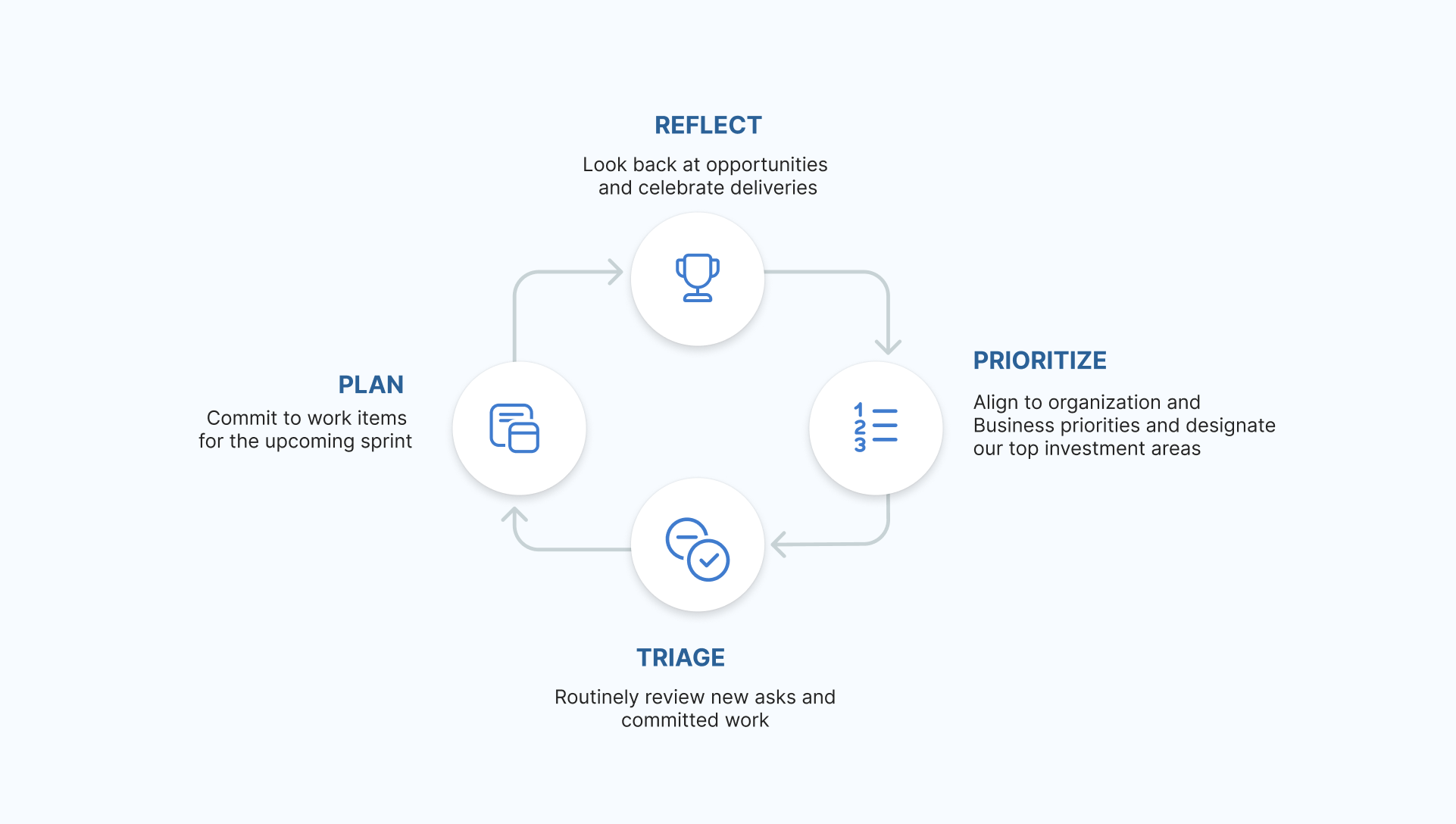
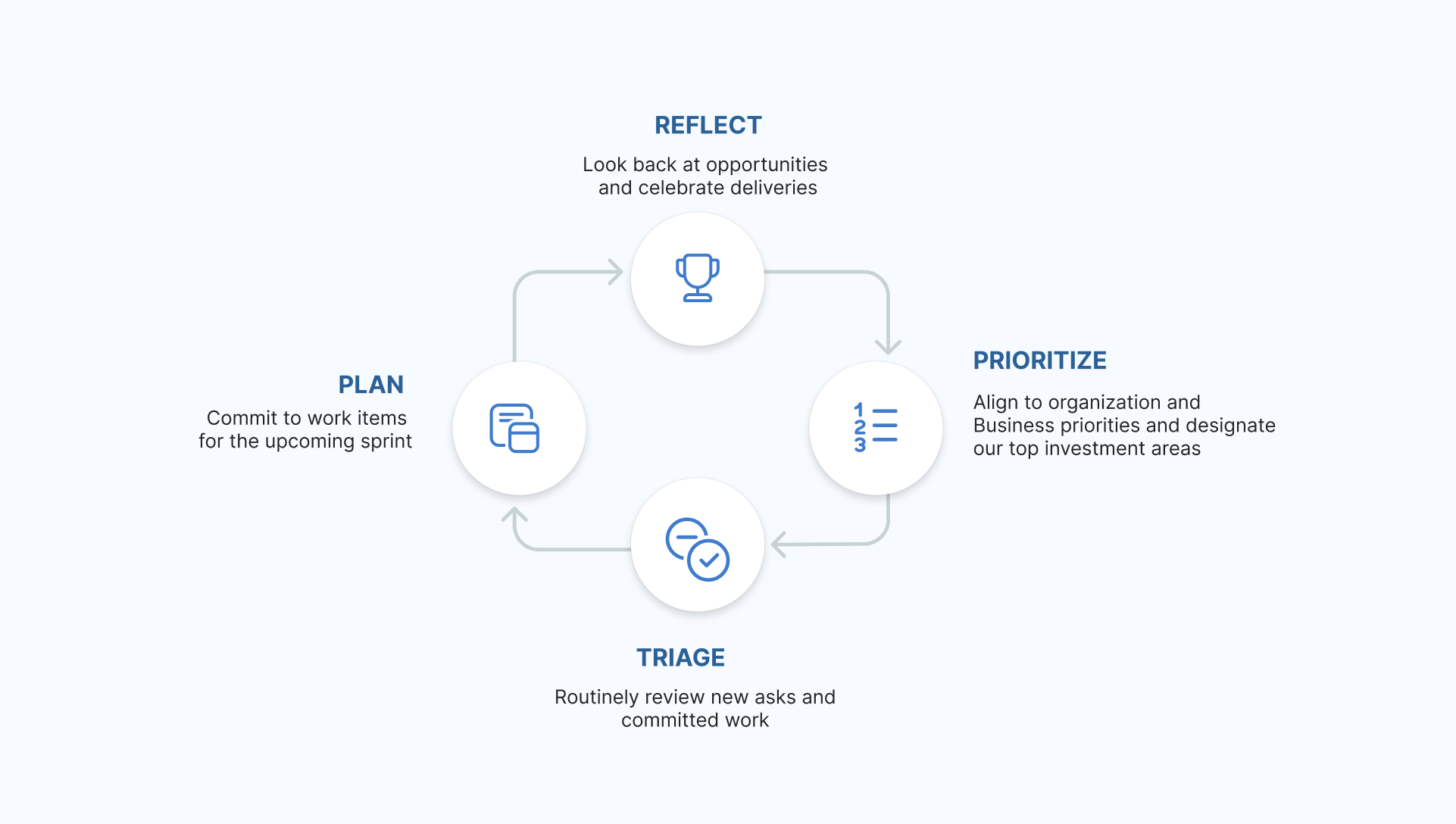
Leave a Reply